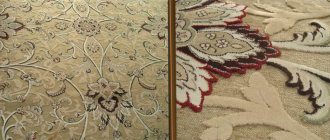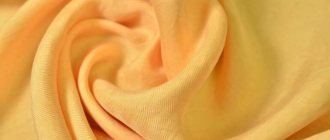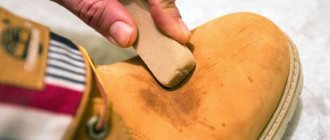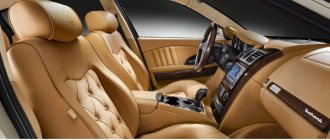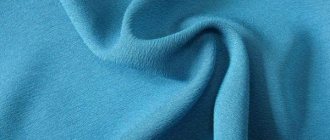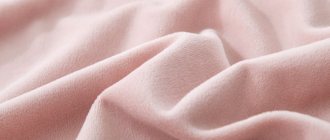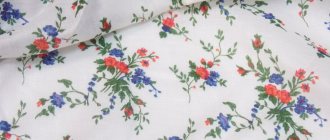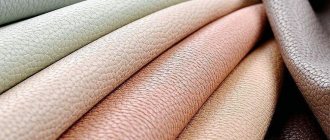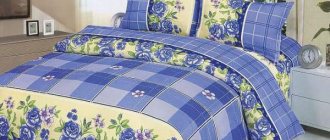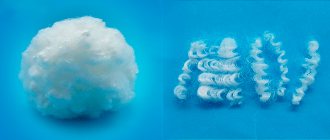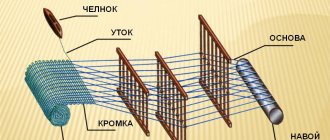Tencel is considered a trade name for environmentally friendly lyocell fibers. It is a relatively new material, has excellent quality and technical characteristics, which can be on par with cotton and silk. In the article we will tell you: Tencel, what kind of material it is, where it came from, what it consists of, and we will give the technical characteristics of the fabric.
History of creation
Many, having seen the word “Tensel” on the labels, begin to ask questions - what kind of fabric is this? The material itself is considered a modern invention, produced using the latest nanotechnology.
The discoverer of this material was England, namely the company Courtaulds Fibers UK. The company is engaged in the production of textiles and in 1988, they decided to try using ordinary eucalyptus fiber instead of raw materials. The experiment yielded positive results and became a success for the company, which managed to produce a previously unused material - lyocell fiber.
Later, from the so-called “lyocell”, a completely new fabric was produced, which was called tencel. The creators of the material immediately realized that the material was made of high quality and would gain worldwide popularity.
In 1991, the company released the material it created to a wider public. And exactly a year later, about 18,000 tons of Tencel were produced, which began to gain momentum in popularity. 6 years after the expanded show, in 1997, mass production of this material was launched.
In 2000, one of the Australian companies decided to buy the lyocell manufacturing technology, which they soon promised to bring to the world level and make it as popular as possible. World fame did not come immediately, but exactly 2 years later, the fabric itself became popular all over the world, and meanwhile production was in full swing.
The material is of high quality, but it still doesn’t have an exact name. In Russia it is customary to call it by two names - Tencel or Tencel.
New invention - Tencel fabric
Lyocell was first discovered in the UK in 1988 (discovered by Courtaulds Fibers UK). It was immediately clear to manufacturers that the unique qualities of the material would ensure its popularity and demand. In 1991, lyocell was introduced to the public, the next year 18,000 tons of fiber were produced, and in 1997 its mass production began.
The Austrian company Lenzing AG bought the lyocell production technology from Courtaulds Fibres in 2000.
They developed a similar fiber in Russia: they called it Orcel. Developments were carried out at VNIIPV, Mytishchi.
Compound
Tencel is made from eucalyptus, so the fabric is also credited with a number of properties of this tree, for example, bactericidal properties. A product consisting of 100% lyocell is expensive due to expensive raw materials and production costs.
Production and purpose of new material
Tencel is produced in the USA, England and Austria. The most famous manufacturer is Lenzing Inc. This company has been producing Tencel since 1993.
Tencel production is an environmentally friendly process. The raw material is eucalyptus. Wood dissolves under the influence of the polar organic solvent N-methylmorpholine-N-oxide (NMMO). In this case, no harmful decay elements are formed at all.
Tencel is often combined with elastane, modal, cotton and other fibers.
The performance characteristics of Tencel arouse interest and demand for this material. It combines the advantages of natural and artificial fibers. The fabric is soft, slightly shiny, like silk, but not slippery, warm, like wool, light, like cotton.
Initially, lyocell was developed as a new material for sewing clothes. Now it is used to make bedding sets, waterproof mattress covers, underwear, clothing, terry products (towels, bathrobes, pajamas). Tencel bed linen belongs to the elite category.
In addition to the clothing industry, lyocell is used for the production of dressings, filters for cars, ropes, and cables.
Properties
The material has a number of advantages:
- excellent appearance;
- environmentally friendly;
- hypoallergenic;
- high strength. When wet it becomes even stronger (stronger than viscose and cotton);
- elastic;
- does not wrinkle;
- “breathes” (permits air well);
- pleasant to the touch;
- The material is easily dyed, so the fabric can be of different colors and patterns. The color is stable and does not fade.
- has dust-repellent properties;
- bactericidal, because it is made from eucalyptus (bactericidal raw materials);
- no pellets are formed when using the products;
- Quite easy to care for. After washing (under the correct mode), the products do not become deformed.
- absorbs moisture very well (hygroscopic).
Reviews of the lyocell material can be found here.
Are there any disadvantages to Tencel? The disadvantage is the high cost of the material.
Find out how to choose a mattress for your bed.
Approximate prices for Dormeo mattresses: .
Here you can see real photos of kitchen curtains.
Composition and properties
Since the material is considered too expensive, it is usually mixed with cotton, silk or synthetic fibers to make it available to everyone. Many people have a question: what kind of material is tencel, what are its characteristics and what percentage of lyocel should be in it for its name to be that. The world standard states that a material has the right to be called “Tensel” if it contains 30 percent lyocel or more.
Regarding the properties of the fabric itself, it is considered unique in all respects.
Clothing made from this material allows the skin to be completely free and breathe even under a tight outfit. A person who wears this fabric even in hot weather will feel cool and completely fresh. In addition, the power of the ability to “breathe” allows matter not only to absorb moisture, but also to evaporate it just as quickly, which allows bacteria not to stagnate and multiply.
Things made from Tencel are hypoallergenic, have high performance characteristics, are wear-resistant if the necessary rules are followed, and are not electrified.
Tencel is considered something unique for active environmentalists. Due to its unique production properties, made exclusively from natural materials, it is a fairly biodegradable matter. In addition, the fabric is made from eucalyptus wood shavings, which in turn has healing properties that have a beneficial effect on the human body, absorbs human diseases and serves as an excellent immunity booster.
Characteristics of Tencel
Tencel fabric is very pleasant to the touch, which allows you to choose it when purchasing. It fits perfectly on the body, is pleasant, and is hygroscopic: this is the kind of clothing you should wear and you won’t sweat in it.
Despite its main advantages and positive characteristics, the fabric also has disadvantages:
- The material is prone to shrinkage, which is why it is correct to do the washing and read as many recommendations as possible. Also, in addition to additional recommendations, when purchasing, you can read on the label what and how to do.
- If worn incorrectly, the fabric can also stretch, which therefore indicates low elasticity of the material.
- When purchasing Tencel bed linen, it is not recommended to wash it like other types of linen, but only dry clean it.
The material can be of two types to the touch, everything will depend on the clothing and the manufacturer itself. The first type is distinguished by its subtlety, tenderness and perfect smoothness. But the second one is considered rougher, with a velvety surface, basically reminiscent of a ripe peach.
Minuses
Today, there are several negative facts about Tencel material:
- This fabric is made from wood, which means it may shrink a little when washed.
- The material is expensive and not every consumer can afford it. For example, an ordinary everyday dress made of Tencel costs from 10,000 rubles.
You might be interested in Features of using Alcantara for sewing car covers
The material may shrink
Production
The production of Tencel is 100% safe for the environment and ecology. It is because of this that the material is so popular among wildlife lovers.
Fibers are obtained from the woody part of cellulose. Instead of raw materials, shavings of Australian eucalyptus trees are most often used, which are grown on designated farms and located in environmentally friendly areas, completely eliminating the addition of additives for fertilizers and herbicides.
Wood shavings, which are used in the course of work, are usually crushed using an organic solvent, after which a mass is obtained, which is passed through specialized molds with small holes. The next step is drying, complete washing and a special pressing method.
Next, it is customary to twist threads from lyocell, or combine them with other types of fibers to obtain a mixed constriction. It is usually combined with cotton, wool, silk and other more durable fibers. In order for a material to be called Tencel, it must contain at least 30 percent lyocell.
The manufacturing process itself is quite complex: initially, a single mass of wood pulp is obtained from eucalyptus wood. Afterwards, threads are formed from this mass by pressing through dies in acidic compounds. The composition itself is used in its entirety, one per batch of cellulose pulp, waste is prohibited from being thrown away, and the production itself is closed and cyclical.
The final stage is drying. All the resulting material can be dyed, and the dye itself adheres well and adheres firmly to the material, which is why the fabric eliminates shedding and fading. Completely pure fiber is considered very expensive, so most often they try to mix it with cotton, bamboo fibers, as well as wool and viscose.
People believe that tencel production is considered to be as much as 100 times safer and less harmful to the environment than cotton production.
Description of fabric
Tencel (lyocell) was created in the 80s of the last century, and gained worldwide popularity in the 90s. Moreover, the fabric has gained popularity not only due to its excellent consumer characteristics (we will talk about them later), but also because the production is completely waste-free and does not harm the environment.
We are used to dividing fabrics into three groups:
- Natural (cotton, linen, bamboo);
- Artificial (polyester);
- Mixed (natural with artificial).
But Tencel is a fundamentally new fabric, based on natural raw materials. The starting material is Australian eucalyptus wood. It is processed until it becomes a homogeneous mass, then, using acid and special dies, threads are formed from the mass. The production is waste-free, closed - processing substances are not released into the environment. The threads are then dried and dyed.
The main production of Tencel is located in the USA. Fabric is expensive to produce (plus export), so in its pure form it takes up no more than 50% of total production. The rest is a mixture of Tencel with cotton, bamboo, synthetics and other raw materials. Depending on the raw materials added, the fabric can be either velvety or silky.
And it is impossible to say accurately and unambiguously whether the fabric is of artificial or natural origin. High-tech both in its production method and in its properties.
Types and features
From the external and tactile part, Tencel has two types:
- Soft and delicate cover;
- Smooth and rough, with a glossy sheen present.
The composition of natural material is:
- One hundred percent (Completely pure Tencel, which is distinguished by quality, excellent characteristics and high price);
- Combined (Adding other types of mothers to get accessible material for any person, while no worse in quality than one hundred percent).
In the second case, fibers are added, which make the material more economical and increase its strength. The following additives are often used: wool, cotton, viscose and bamboo fibers.
Application
Thanks to the unique properties of Tencel fabric, it will suit absolutely everyone, without exception. It can be used for household, medical, technical and personal needs.
If you rely on reviews, you can find a lot of positive emotions from people who have sensitive skin, who suffer from skin irritations and diseases, and how they praise this fabric. The fabric is considered beneficial for every person, even those who are allergic to synthetic fibers.
The material is actively used for the manufacture of children's items, diapers and nappies, so that the newborn baby always remains in comfortable and non-irritating conditions.
Casual clothing is also made from Tencel. It is mainly used for sportswear and elite class bedding. It is actively used in the production of underwear, dressing gowns and towels. It is also actively developing in the automotive sector, producing dressing kits for automobile and hydraulic filters.
Care instructions
General recommendations for caring for Tencel fabric:
- It is worth paying attention to the material, as some are recommended to be dry cleaned only and not to be machine washed or hand washed;
- It is recommended to avoid high humidity to avoid the appearance of mold on the product, dry thoroughly and let it air out;
- Washing must be done at a gentle temperature, which is no more than 30 degrees, and it is better to do it manually. It is recommended to carry out the last rinse in cold water; completely avoid spinning in the washing machine;
- When washing, do not use powders - only liquid detergents;
- Instead of ironing, it is recommended to use steaming, in the acceptable “silk” mode, only from the wrong side;
- It is best to store Tencel items in specialized cases or bags, while avoiding direct sunlight to prevent the fabric from fading.
Do not neglect the actions that are indicated on the labels of the product being sold, as you can ruin it!
Advantages and disadvantages
The fabric has an expanded range of positive benefits and does not use toxic substances.
Advantages:
- Made from eucalyptus wood, it has a bactericidal effect;
- Due to its composition, leather breathes well into the fabric;
- Soft and pleasant to the body material;
- Quite thin and smooth, to some extent may resemble silk;
- It has the property of warmth and coolness at the same time, allowing the theme to be constantly at the same temperature;
- It is quite difficult to tear, even when wet;
- Absorbs moisture perfectly and serves as a quick evaporator;
- Practically does not wrinkle;
- Not electrified;
- Perfect for any person, does not cause allergic properties;
- Remains in the same shape for quite a long time and has an attractive appearance;
- Easy to care for, can be washed in a washing machine at low temperatures;
- Heat-resistant, excellent breathability;
- Even with long-term use, pellets do not form on the material;
- It is bactericidal because it is made from eucalyptus (bactericidal raw materials);
- Very pleasant to the touch.
Despite its many positive features and characteristics, the material has its drawbacks, which may affect the purchase of material from this fabric.
Flaws:
- The material is prone to deformation during use;
- Some items cannot be machine washed and require dry clean only.
Properties
Since Tencel is made from eucalyptus wood, the material has a number of special qualities. For example, antibacterial properties. Bacteria do not live or multiply on clothing and other products made from Tencel. Therefore, the material began to be used for the production of bed linen and dressings.
Other material properties:
- ease;
- beautiful shine;
- hygiene;
- hygroscopicity;
- softness;
- ability to retain heat;
- tactile comfort;
- environmental cleanliness;
- hypoallergenic;
- elasticity;
- strength;
- breathability;
- excellent thermoregulation;
- with long-term use, pellets do not form;
- the fiber holds the dye well;
- the fabric does not wrinkle;
- repels dust;
- dries quickly;
- the material is easy to care for.
Tenzel can be either smooth or terry. There are two types of finished fabric.
- Smooth. Feels like silk. There is a slight shine.
- Velvety. Soft and delicate fabric reminiscent of velor or peach skin.
Velvety tensal makes beautiful towels and robes. Recycled wood absorbs water well. And special essential oils in the composition prevent bacteria from multiplying.
Tencel vaguely resembles viscose. Indeed, they have a lot in common: both fabrics are made from cellulose fiber. However, tencel has a number of advantages over viscose:
- Durability – Tencel is stronger than viscose, especially when wet;
- breathability – clothes made from Tencel “breathe” much better than those made from viscose;
- Tencel is wrinkle-resistant, which cannot be said about viscose.
Despite all its advantages, Tencel has two disadvantages.
- High price. To reduce the cost, others are often added to eucalyptus fibers: cotton, elastane, polyamide.
- Susceptibility to deformation. Despite its elasticity, Tencel, especially 100% Tencel, is prone to shrinkage and stretching. Therefore, it is important to follow the manufacturer’s recommendations for caring for the item.
Tencel bed linen is considered elite and costs a lot. But it has a beautiful appearance, an amazing smell, and the ability to maintain freshness for a long time.
